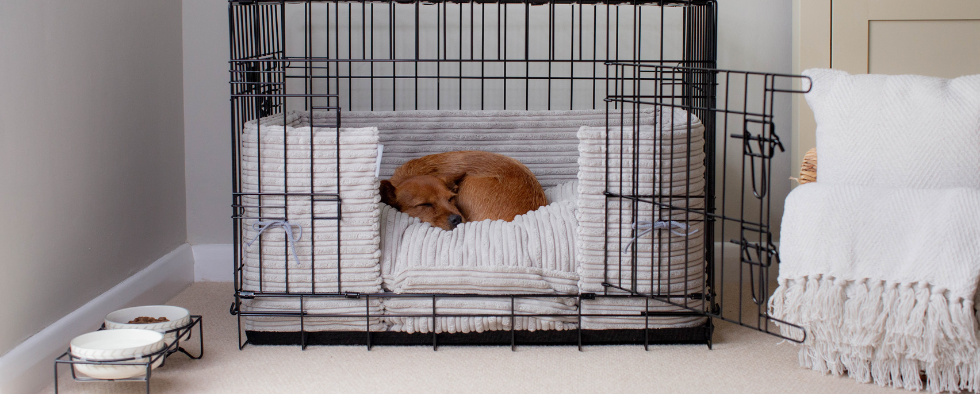Are your dog’s crate entries and exits chaotic and stressful? You’re not alone.
Many dog owners struggle with getting their pets to stay calm when going in and out of the crate, especially near doors. But imagine if your dog greeted every crate time with calmness and ease. This not only makes your life simpler but also builds trust and good manners.
In this post, you’ll discover simple, effective steps to train your dog to have calm crate entries and exits, improving their door manners and creating a peaceful routine for both of you. Ready to transform your dog’s behavior? Let’s dive in.
Benefits Of Calm Crate Training
Calm crate traininghelps dogs feel safe and relaxed inside their crate. It lowers stress and anxietyby making the crate a quiet, happy place. Dogs learn to see the crate as a cozy spot, not a punishment.
It also improves safetyby teaching dogs to enter and exit calmly. This stops rushing or jumping out, which can cause injury or damage. Calm behavior near doors keeps both dogs and people safe.
Building positive associationswith crate entries and exits is key. Using treats and gentle praise helps dogs enjoy the process. This makes them want to enter the crate happily and stay calm when leaving.
.jpg)
Credit: blog.fentress.com
Preparing Your Dog For Crate Time
Choosing the right crate is key. It should be big enough for your dog to stand, turn, and lie down comfortably. Too large can feel unsafe. Too small can cause discomfort.
Creating a cozy space helps your dog feel secure. Add a soft blanket or bed inside. Place favorite toys or treats to make it inviting.
Introducing the crate slowly works best. Start by leaving the door open. Let your dog explore at their own pace. Offer treats for going near or inside the crate. Gradually increase the time spent inside with the door closed.
Techniques For Calm Crate Entries
Use treats and rewardsto encourage calm behavior near the crate. Give a small treat when your dog walks calmly toward the crate. This helps your dog connect good feelingswith entering the crate. Praise with a soft voice too.
Verbal cueslike “crate” or “bed” signal your dog what to do. Say the cue clearly before the dog moves toward the crate. Repeat the cue often during training. This builds understanding and routine.
Start with short training sessionsto keep your dog focused. Five minutes is enough at first. Gradually increase time as your dog gets better. Short sessions help your dog stay calm and not get bored or stressed.

Credit: blog.fentress.com
Training Calm Exits From The Crate
Waiting patiently helps dogs learn calm behavior before exiting the crate. Teach your dog to sit or lie down quietly. Only open the door when the dog stays calm. Use a clear release command, like “Okay” or “Free,” to signal permission to leave. This helps dogs understand when it is time to exit.
Avoid encouraging jumping or barking at the door. Do not open the crate if the dog jumps or acts excited. Wait until the dog calms down. This stops reinforcement of bad behavior. Reward calm actions with gentle praise or treats. Consistency is key to teaching good door manners.
Improving Door Manners
Dogs often get very excited at doors. This excitement can make crate entries and exits hard. Teaching dogs to wait calmlyhelps a lot. Start by asking your dog to sit and staybefore opening the door. Reward calm behavior with treats or praise. This shows your dog that staying calm gets good things.
Using a leash can give you better control. Hold the leash firmly but gently. This stops your dog from rushing out or pulling. Practice opening the door slowly while your dog stays in place. Repeat this often to build good habits.
| Step | Action | Goal |
|---|---|---|
| 1 | Ask dog to sit and stay | Teach calm waiting |
| 2 | Hold leash firmly | Control excitement |
| 3 | Open door slowly | Practice calm entry/exit |
| 4 | Reward calm behavior | Encourage good manners |
Common Challenges And Solutions
Door dartingcan be dangerous. Keep your dog calm by using a leash near doors. Teach your dog to wait patientlybefore entering or exiting. Reward calm behavior with treats and praise. Consistent practice helps your dog learn good habits.
Crate resistanceoften happens if the crate feels scary. Make the crate cozy with soft bedding and toys. Let your dog explore the crate without pressure. Use treats to make the crate a positive place. Never force your dog inside; patience is key.
Maintaining consistencyis essential for success. Everyone in the home should follow the same rules. Use the same commands and rewards every time. Regular practice builds trust and helps your dog understand expectations. Consistency reduces confusion and anxiety for your dog.
Tools And Aids For Training
Clickers and markershelp dogs learn by giving clear signals. Clickers make a short sound to mark the right action. Markers can be words like “yes” or “good.” These tools make training faster and easier. They tell the dog exactly when they do well.
Calming aidshelp dogs stay relaxed during training. Items like soft blankets or calming sprays create a cozy space. These aids reduce stress and keep dogs calm near doors and crates. A calm dog learns better and feels safe.
Safety equipmentprotects both dogs and trainers. Leashes, harnesses, and gates control movement safely. They prevent dogs from rushing out or slipping away. Safety tools keep training smooth and worry-free.

Credit: www.lordsandlabradors.co.uk
Maintaining Long-term Calm Behavior
Practice is key for calm crate entries and exits. Short, daily sessions help dogs feel safe and relaxed. Keep routines simple and consistent. Gradually increase distractions to build focus.
Adjust training steps if your dog seems stressed or confused. Watch their body language closely. Change the pace or method to match their comfort level. Patience is important.
Reward calm behavior every time your dog waits quietly. Use treats or gentle praise to reinforce positive habits. Avoid rushing or forcing your dog. Calmness should feel natural and safe.
Frequently Asked Questions
How Do I Teach Calm Crate Entries For My Dog?
Start by rewarding your dog for entering the crate calmly. Use treats and praise. Avoid forcing your dog inside. Repeat short sessions daily to build positive associations and calm behavior.
What Are Effective Door Manners For Dogs?
Teach your dog to wait patiently before entering or exiting. Use commands like “wait” or “stay. ” Reward calm behavior consistently. This prevents door rushing and promotes safety.
How Can I Train Calm Exits From The Crate?
Encourage your dog to exit slowly by using a cue like “easy” or “slow. ” Reward gentle steps outside the crate. Avoid sudden movements to reduce excitement and promote calmness.
Why Are Calm Crate Entries Important For Dogs?
Calm crate entries reduce stress and create a positive experience. It prevents anxiety and improves crate acceptance. This helps with overall dog behavior and safety in the home.
Conclusion
Training calm crate entries and exits helps your dog stay relaxed. Consistent practice builds good door manners over time. Keep sessions short and positive for best results. Patience and gentle guidance make a big difference. Calm behavior at doors creates a safer home for everyone.
Small steps lead to lasting habits your dog will enjoy. Stay calm yourself to help your dog feel secure. With time, your dog will greet doors with ease and peace.





